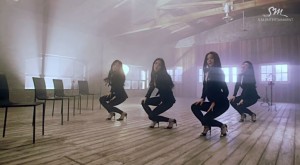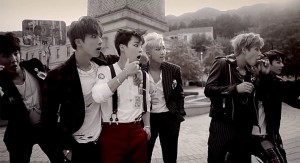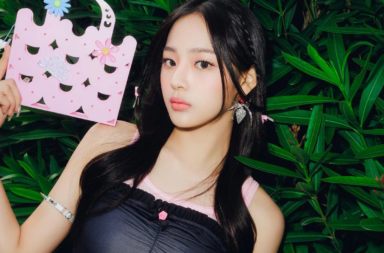 Do idols feel a sense of dread from the pressure when their directors tell them they need to do it in one take, or else their whole group will have to redo the whole shot again and again?
Do idols feel a sense of dread from the pressure when their directors tell them they need to do it in one take, or else their whole group will have to redo the whole shot again and again?
It is no secret that idols work extremely hard behind the scenes to perfect their performances. Oftentimes, this comes at an expense to their health as they forgo sleep and food in order to fully prepare for performances. With a crowded market place, it has become more difficult for idols to stand out amongst their contemporaries. Groups have tried different methods to make their work product more impressive. With music videos, one such approach is the art of the one take. Because of its use of one long continuous shot, the video feels simplistic, but the practice and setup that goes on behind the scenes to make an interesting one shot video is extensive. There are a few techniques of shooting that are relied utilized to keep the viewer interested. In more recent times, K-pop has favored the one shot dance MV, but there have been a few instances where the one take video style has been used to convey another feeling.
One shot videos typically have the feeling of being grounded in reality. While the typical K-pop MV is often wrought with many cuts and special effects, one shot MVs are sparse and use elements like misdirection and swift camera changes to keep the viewer guessing and interested. The straightforward approach of the one shot can actually better highlight an artist while still being an impressive visual treat.
 With a dearth of locations and variety of shots to use, to keep a one shot music video interesting, the video has to compensate in a variety of ways. The angle of the camera is of the utmost importance, and its movement coinciding with the staging adds drama and smoothness. Of course, great camerawork paired with lackluster choreography or dull expressions can only do so much. If the video highlights movement, the choreography has to be flashy and call for moments that will keep a one take video interesting. The staging makes all the difference — this can mean hand gestures that guide a camera’s direction towards the next bit or a dance that flows towards a new section. It takes a lot of planning to get these videos just right. The pressure is immense. You have to execute it properly in one go, or with one misstep or error, multiple takes can equate to nothing
With a dearth of locations and variety of shots to use, to keep a one shot music video interesting, the video has to compensate in a variety of ways. The angle of the camera is of the utmost importance, and its movement coinciding with the staging adds drama and smoothness. Of course, great camerawork paired with lackluster choreography or dull expressions can only do so much. If the video highlights movement, the choreography has to be flashy and call for moments that will keep a one take video interesting. The staging makes all the difference — this can mean hand gestures that guide a camera’s direction towards the next bit or a dance that flows towards a new section. It takes a lot of planning to get these videos just right. The pressure is immense. You have to execute it properly in one go, or with one misstep or error, multiple takes can equate to nothing
Likely the most popular type of one shot MV at the moment, the dance performance video has been greatly utilized in K-pop recently. For the K-pop fan, seeing dancing in a video is not out of the norm. It can become a predictable staple as some entertainment companies may solely rely on the same old formula: box set, individual shots, and clips of random dancing spliced altogether. Hence, for companies that may depend on this tried and true blueprint, the one shot is a welcome change up from the norm. With these, the dance becomes imbued with a fluidity in movement as the camera glides around the group. Recent iterations of this dance one shot include the popular “Growl” video from Exo and “War of Hormone” from BTS.
What’s interesting about these artists is the focus on the dance performance. The groups that are utilizing this method of filming want to be associated with a certain dance quality. Being able to impress without any frills becomes a means for showcasing the choreography. The members each have to be able to perform with their body and facial expressions, with only subtle camera and formation changes that allow for a short reprieve from being on stage. Similar to how dance practice videos have become increasingly popular for fans to consume, the one shot dance MV hinges on the performance ability and synchronicity of the choreography – except with better clothes, more interesting sets, and varying camera movement.
 One takes that don’t involve a lot of dance choreography can be complex as well. Big Bang’s “Love Song” and Super Junior’s “It’s You” both use the single camera perspective and key prop and/or member appearances to make these videos a treat for fans. One recent usage is Taeyang’s “Eyes, Nose, Lips.” The frames in this are varied enough to pique the viewer’s curiosity. Extreme close ups are paired with a gradual expanding background to keep the viewer captivated. Even without much dance in the video, the draw of revealing the environment piece by piece like a puzzle that slowly unveils to the fiery finish is what compels the viewer to keep watching.
One takes that don’t involve a lot of dance choreography can be complex as well. Big Bang’s “Love Song” and Super Junior’s “It’s You” both use the single camera perspective and key prop and/or member appearances to make these videos a treat for fans. One recent usage is Taeyang’s “Eyes, Nose, Lips.” The frames in this are varied enough to pique the viewer’s curiosity. Extreme close ups are paired with a gradual expanding background to keep the viewer captivated. Even without much dance in the video, the draw of revealing the environment piece by piece like a puzzle that slowly unveils to the fiery finish is what compels the viewer to keep watching.
One shot MVs aren’t a novelty that was started by K-pop artists but something that was adapted by K-pop companies to innovate and keep fans more interested in the product. One particular international artist to note is music video sensation Ok Go, who has drawn interest with their eccentric stunts they orchestrate. They have utilized the dynamic of the Rube Goldberg machine, which truly shows the amount of manpower, planning, and meticulous efforts put into a video that can only be done in one take.
K-pop viewers similarly enjoy that kind of excitement. The viewer becomes glued to the screen that doesn’t cut away. Every moment suddenly becomes a part of that three minute and thirty seconds of unrelenting recording — an unedited moment that is shared with the fans. The pressure to not mess up is increased, but the results are rewarding. Even if you drop your hat in the middle of dancing, you better swiftly pick it up and continue with the choreography, lest your mistake costs your group another twenty takes. Of course, K-pop has cheated the system at times. With swift editing to reveal a new scene, maintaining a one shot perspective with transitions can make a video appear like it was done in one take — i.e. Red Velvet’s “Be Natural.” As K-pop keeps looking for different ways to make a product stand out from the crowd, looking to reduce the excess flashiness of certain mediums can sometimes make the end result easier to appreciate. Simplicity can reveal just how complex and refined the whole K-pop system truly is.
(Images via SM Entertainment, YG Entertainment, Big Hit Entertainment)


